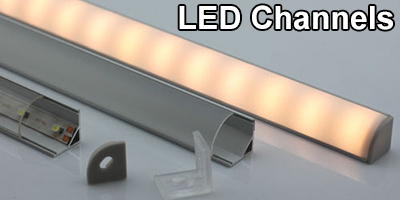Some time ago I came to the conclusion that it's safer to leave lithium cells in the flashlight and charge them there, rather than remove them and charge them in a separate charger. Main reasons have to do with possibly dropping cells that have no physical protection around them and with the potential for shorting cells if they end up being stored, which is tempting to do.
I am rethinking this as I start to conclude that:
a) built-in chargers are something of a black box and it's unclear how well designed they are, and
b) the power connection provides a location for water ingress.
I like my AAA penlights but there are circumstances where I need more light or longer runtime.
I am outside and on boats and everything gets wet so I need lights that are truly water resistant; many claim to be but are not.
Advice welcome.
If you're buying from a quality manufacturer, you likely need not worry about the charging circuit design itself; with lesser quality lights, it could be a concern (along with the rest of the design for that matter).
Regarding the input connection: There are lights with proper, 'purpose designed / built' input connectors (not *******ized / borrowed data connectors), which would be very unlikely to leak. I'd look for those in particular if ingress is a concern. I have some and they're great (they can provide a properly-sealed interface), and they generally (but not always) use magnetic connector retention. Fenix uses such an interface on some models (I have one).
With lights using USB connectors for power input (the cheapest / most common type), most have a rubber sealing plug, which is
not a good long-term solution. There are some (I have one) which locate the USB connector inside / behind an O-ring sealed threaded collar / body section, and seem to be superior to the rubber plug (which stands to reason). There may be environmentally sealed USB-type connectors themselves, but if so are probably not used in most flashlights.
You could also buy a Streamlight Strion like I (and many other professional users) use, and forget about all those issues (and some others) completely. Both the interface (purpose-designed and bespoke) and charger (with lots of input options) is excellent and 'bulletproof' / rugged (in the dozen years I've been using them). I've been using the same charger for over a dozen years with several different Strions.
Suggestion: Here's the latest one I bought a few months ago, and I wouldn't trade it for anything. There are several models. FYI: I paid $100 USD for it (w/o charger), and it's worth every single penny. GOTO the 'Documentation +)' area and you'll find a wealth of good info / specifications (particularly the Fact Sheet). Note that if you prefer relatively 'flat' output / time characteristics as many people do, you'll like that about the design too (graph lower-right of Fact Sheet). If you get a Strion, you can quit worrying about all such issues (and more). Great (real FL1-compliant) specs, 2-meter impact rating, Borofloat lens, Ten-Tap options, etc., etc. They're 'professional grade'. I've had 3 over those years, and none have ever failed in any way or even had a part replaced, and they have not had an easy life (industrial environment, etc.) You'd also be supporting a great U.S. company, if that matters. I'm told their support is first-rate, but have never needed it with any of my Strions, but I know it's there if I do.
EDIT: Note that this light is IPX4 rated, but not water 'proof'. I don't know how it would fare if submerged. I've never done that. I note that my Stinger 2020 is IPX7 rated, which covers to 1 meter submersion (30 min.). It uses a very similar charging interface / connection. So, there are other options, and in a marine environment (which I don't deal with), that might matter to you.

